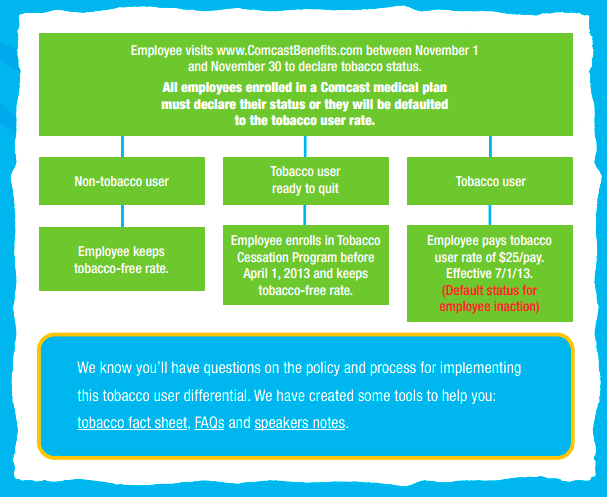For its 2013 open enrollment, Comcast turned to context for help with all related communications. But it was Comcast’s introduction of a tobacco-user rate that required significant attention.

Our work
Comcast already provided substantial support to employees and family members interested in quitting tobacco. In 2013, Comcast expanded its support, beginning with recognition of tobacco-free individuals and those ready to strive for this status.Comcast started by acknowledging the 80% of employees who were already tobacco-free. For them, Comcast introduced a different, lower medical plan rate. Next, Comcast considered how to best support tobacco users. Two options were designed for this group. Employees could choose to pay the higher rate or, if they were ready to quit, receive the lower rate available to tobacco-free employees by completing a company-paid tobacco cessation program. No matter their choice, Comcast would pay the full cost of tobacco cessation programs, nicotine replacement products, and any related co-pays. All financial barriers were removed.

For everyone, the critical first step was declaring tobacco status. Without declaring their status, employees automatically defaulted to the tobacco-user rate. context focused on ways to explain the mechanics of this new policy while embedding its rationale in a business and personal framework. Mechanics can overwhelm readers, so context created visual elements for use in online, in-person, and email communications targeted to all key stakeholders: employees, managers, senior leaders and HR.



